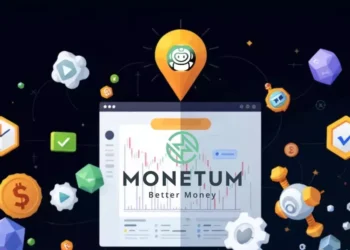The number of unicorns in Asia-Pacific climbed more than 25% to 450 last year, when the region attracted almost a third of global private investments. Venture capital (VC) investors also appear keen on companies looking to enhance traditional manufacturing processes as well as from various technology sectors, including semiconductors and new energy vehicles.
Clocking another record-breaking investment gains in 2021, Asia-Pacific brought in $193 billion in private investments across 12,119 transactions, according to a report released Monday by KPMG and HSBC. This accounted for more than a quarter of the global figure of $670 billion and an increase of 67% from the year before.
The report assessed 6,472 technology startups with valuations of up to $500 million in 12 markets, including Mainland China, India, Australia; Singapore, South Korea; Hong Kong, and Indonesia. KPMG and HSBC also listed what they deemed as the top 100 “emerging giants” in the region, which saw China and India dominating the pack. Some 33% of companies on the list were Chinese, while 30% were from India and 13% from Japan.
Several that made the cut were from key sectors such as fintech, artificial intelligence (AI) and machine learning, e-commerce, health tech, and supply chain.
The region, though, also was seeing investments in new verticals beyond traditional new economy businesses such as fintech and software-as-a-service (SaaS). The report pointed to tech sub-sectors including blockchain, smart city, as well as sustainability and ESG (environmental, social, and governance) that were gaining prominence.
Blockchain-related categories of non-fungible tokens (NFTs) and decentralised finance were most commonly associated subsectors, where more than 25% on the emerging giants list were from these verticals. Blockchain real estate and decentralised autonomous organisations also were amongst the top 20 subsectors, which the report attributed to the current focus in Asia-Pacific on digital assets, the metaverse, and Web 3.0 technologies.
This diverse mix of markets was a key attribute to the region’s ability to attract investor attention, as was its digital infrastructures and ecosystems.
“Across Asia-Pacific, VC investors are showing heightened interest in companies working to improve traditional manufacturing processes or providing SaaS B2B (business-to-business) services,” said KPMG China’s partner of clients and innovation, Egidio Zarrella. “There is also growing interest in the number of different technology-focused sectors, including new energy vehicles, semiconductors, and hardware-related technologies.”
In the coming year, robotics and automation would transform factories, where blockchain and tracking technologies would facilitate efficiencies and transparency. And while consumer-facing companies and fintechs would continue to lure the largest share of investment, as markets matured, investor attention would shift to value-adding B2B startups in markets such as education, healthcare, and clean tech.
Pointing to Asia-Pacific as a driving growth engine, the report also noted that the region’s mobile subscriber base was projected to hit 3 billion by 2025 and middle class population expected to reach 1 billion by 2030.
Its growing mobile-first development would fuel digital platforms and superapps, driving consumption of associated services including mobile payments, e-commerce, games, and fintech.
And as the region worked to address climate change, there would be opportunities for businesses offering the ability to track and analyse carbon emissions, implement and operate smart renewable energy systems, and deploy green finance tools.
Honson To, chairman of KPMG Asia-Pacific and KPMG China, said: “Looking ahead, the global push towards carbon-neutrality will be a major driver of innovation as traditional sectors go green, and emerging giants will likely play a key role in developing the technologies that can reduce carbon emissions and promote more responsible stewardship of the environment. Asia will be a crucial battleground in the fight for a more sustainable future.”














![Bitcoin [BTC], Gold, S&P 500 and a case of the widening correlation](https://www.blocpress.com/wp-content/uploads/2023/03/chart-1905225_1920-1000x600-120x86.jpg)




